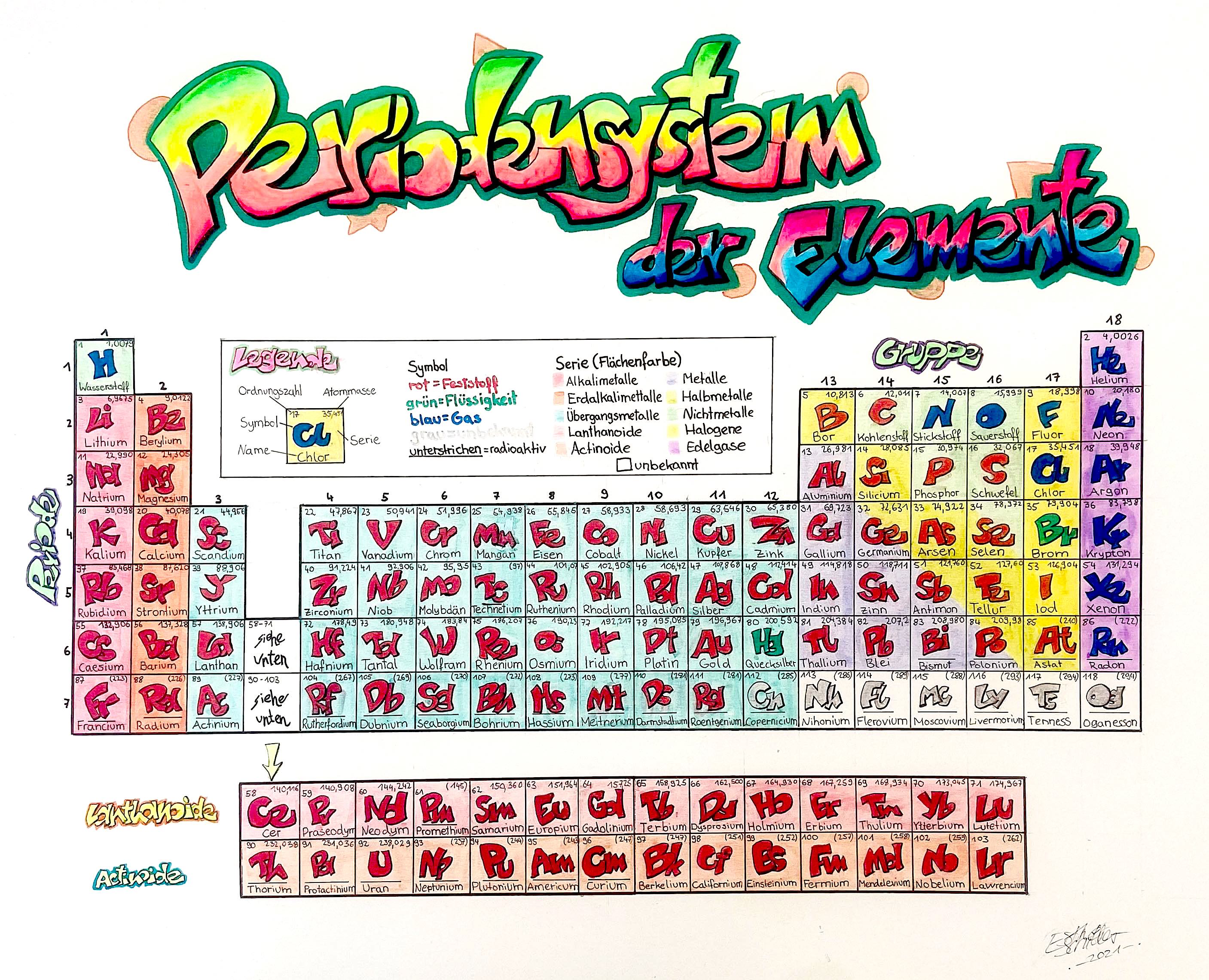
Copyright © Esther Schiller, 2021.
*
For over 150 years, the periodic table of the elements has led to the following question: Will a new element be discovered? In 2021, the question is: does an additional period (row) exist? Or is the list complete? (There is a myth that 137 is the highest possible atomic number, but it is wrong.)
*
Most probably, any missing element will be radioactive and not be of any practical importance. But even if the periodic table of the elements were complete now, the lack of empty boxes does not imply the end of chemistry.
Physicists can learn a lesson from these results for their own science: physics will continue even if no new elementary particle is discovered.
*
For a physicist, the table of elements is a complex and fascinating result of the standard model of particle physics and of general relativity.
The electromagnetic interaction determines the electron cloud around the nucleus, the radius and the chemical properties of each element. The electromagnetic interaction determines the structure of the periodic table. In particular, the fine structure constant and the electromagnetic gauge group fix the size of atoms and nuclei, limit the stability of both, and determine all colours.
The nuclear interactions determine the quark model, the properties of protons and neutrons, and the properties of nuclei. In particular, the strong and the weak coupling constants determine the properties of the nuclei, and so do the strong and the weak gauge group. The weak interaction coupling and the mixing angles determines the mixing of the quarks. Both nuclear interactions thus determine which isotopes are stable and which are not.
Gravitation, together with the gauge interactions and the Higgs mechanism, determines the mass of the elementary particles and thus, in the end, together with the gauge interactions, also determines the mass of all atoms.
But the table of the elements also highlights the limitations of the standard model and of general relativity. It is not yet known how the two fundamental theories determine the masses and quantum numbers of the elementary particles, and thus of the atoms. It is not yet known how the two theories determine the number and types of elementary particles and how they determine the number and types of the fundamental forces. To learn more about what is known and what is not, look at the description of textbook physics in nine lines. The nine lines list everything that is known in fundamental physics, and they present all that is unknown. For example, because we do not know the origin of the fine structure constant and of the electron mass, we do not yet know the origin of all the colours in nature.